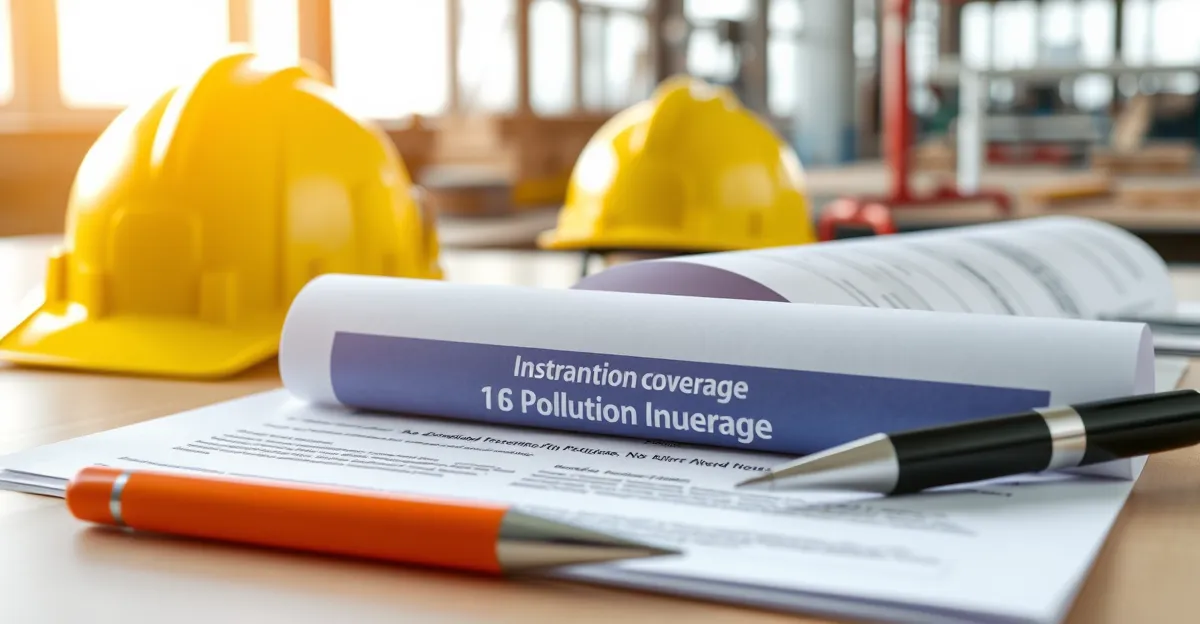
Complete Construction Pollution Insurance Coverage Guide
Protecting Your Business from Environmental Liabilities
Construction pollution insurance has become essential protection for contractors and developers as environmental regulations tighten and cleanup costs soar. This comprehensive guide explains everything you need to know about protecting your business from environmental liabilities.
Understanding Construction Pollution Insurance
Construction pollution insurance provides coverage for environmental liabilities that arise from construction activities. Unlike general liability insurance, which typically excludes pollution claims, this specialized coverage protects against contamination incidents, regulatory violations, and associated cleanup costs.
The construction industry faces unique environmental risks that can result in substantial financial losses. From soil contamination during excavation to groundwater pollution from equipment leaks, these incidents can lead to cleanup costs in the millions, regulatory fines, and third-party liability claims.
Types of Coverage Available
Contractors Pollution Liability (CPL)
CPL insurance is the most common form of construction pollution coverage. It protects against pollution conditions arising from your work, including gradual pollution, sudden and accidental releases, and pre-existing contamination that you disturb during construction activities.
Professional Liability for Environmental Consultants
This coverage protects environmental consultants and engineers who provide advice on pollution-related matters. It covers errors and omissions in professional services that result in environmental contamination or regulatory violations.
Site Pollution Liability
Site pollution liability insurance covers pollution conditions that exist on a specific property. This is particularly important for construction projects on previously contaminated sites or locations with environmental risks.
What Construction Pollution Insurance Covers
Key Coverage Areas:
- Soil contamination cleanup costs - Remediation expenses for contaminated soil
- Groundwater pollution treatment - Costs to clean polluted groundwater systems
- Third-party liability claims - Legal costs and damages for pollution affecting others
- Regulatory defense costs - Legal expenses for environmental agency investigations
- Emergency response expenses - Immediate containment and cleanup costs
- Business interruption coverage - Lost income due to pollution incidents
Common Exclusions to Understand
While construction pollution insurance provides broad coverage, it's important to understand common exclusions that may limit your protection:
- Intentional acts - Deliberate pollution or environmental violations
- Nuclear incidents - Radioactive contamination is typically excluded
- War and terrorism - Military actions and terrorist attacks are excluded
- Certain chemicals - Some high-risk substances may be excluded
- Asbestos and lead - Often excluded or require separate coverage
Industry-Specific Considerations
Heavy Construction and Infrastructure
Large construction projects involving excavation, tunneling, and infrastructure development face higher environmental risks. These projects often require higher policy limits and more comprehensive coverage due to the potential for significant contamination events.
Residential Development
Residential construction projects may encounter contaminated soil from previous land uses. Developers need coverage for both known and unknown contamination that could affect property values and resident safety.
Environmental Remediation Contractors
Companies specializing in environmental cleanup face unique risks and require specialized coverage for their remediation activities. This includes protection against re-contamination and incomplete cleanup claims.
Cost Factors and Coverage Limits
The cost of construction pollution insurance depends on several factors including project scope, location, previous environmental issues, and the contractor's safety record. Typical coverage limits range from $1 million to $50 million per occurrence.
Factors Affecting Premium Costs:
- Project location and environmental sensitivity
- Type of construction activities and equipment used
- Contractor's experience and safety record
- Previous environmental claims history
- Policy limits and deductible amounts
Claims Process and Response
When a pollution incident occurs, immediate response is critical. Your insurance carrier should be notified within 24-48 hours, and emergency containment measures should begin immediately to minimize damage and protect public health.
The claims process typically involves environmental site assessment, cleanup planning, regulatory coordination, and ongoing monitoring. Working with experienced environmental consultants and legal counsel is essential for successful claim resolution.
Risk Management Best Practices
Implementing strong environmental risk management practices can help reduce your pollution exposure and potentially lower insurance costs:
- Conduct thorough site assessments before beginning work
- Implement spill prevention plans and emergency response procedures
- Train employees on environmental compliance and safety protocols
- Use appropriate containment measures during high-risk activities
- Maintain detailed documentation of environmental compliance efforts
⚠️ Critical Considerations:
Environmental cleanup costs can escalate rapidly. A single contamination incident can cost millions in cleanup expenses, regulatory fines, and third-party claims. Adequate insurance coverage is essential protection.
Choosing the Right Coverage
Selecting appropriate construction pollution insurance requires careful evaluation of your specific risks, project types, and financial exposure. Working with an experienced insurance broker who specializes in environmental liability coverage is crucial for obtaining optimal protection.
Consider factors such as policy triggers (claims-made vs. occurrence), coverage territory, retroactive dates, and available endorsements when comparing policies. The cheapest option may not provide adequate protection for your specific risks.
Frequently Asked Questions
Q: Does general liability insurance cover pollution claims?
A: No, most general liability policies contain pollution exclusions. You need specialized construction pollution insurance for environmental contamination coverage.
Q: How much construction pollution insurance do I need?
A: Coverage needs vary by project size and risk level. Most contractors carry $1-10 million in coverage, but large infrastructure projects may require $25-50 million or more.
Q: Are pre-existing contamination conditions covered?
A: Coverage for pre-existing contamination depends on your policy terms. Some policies cover pollution you disturb during construction activities, while others exclude pre-existing conditions entirely.
Q: What's the difference between claims-made and occurrence coverage?
A: Claims-made coverage responds when a claim is reported during the policy period, while occurrence coverage responds when the pollution incident occurs, regardless of when it's reported.
Q: How long should I maintain pollution insurance coverage?
A: Environmental liabilities can emerge years after construction is complete. Many contractors maintain coverage throughout the project and for several years afterward, or purchase extended reporting periods.
Ready to Protect Your Business?
Get a customized construction pollution insurance quote from our experienced team. We'll help you find the right coverage for your specific risks and projects.
Get Your Quote Today